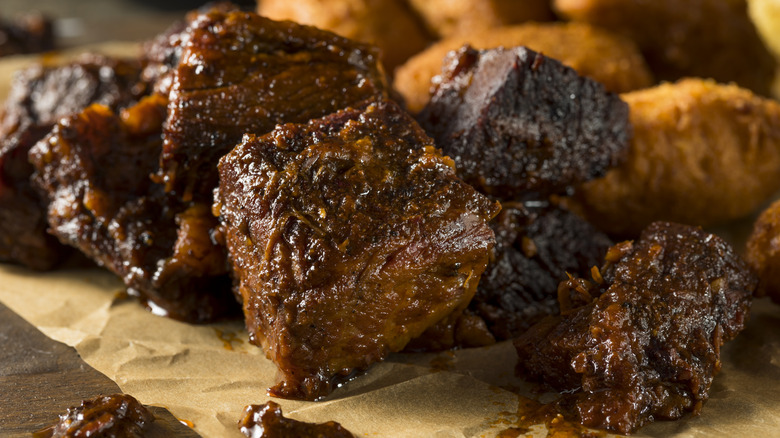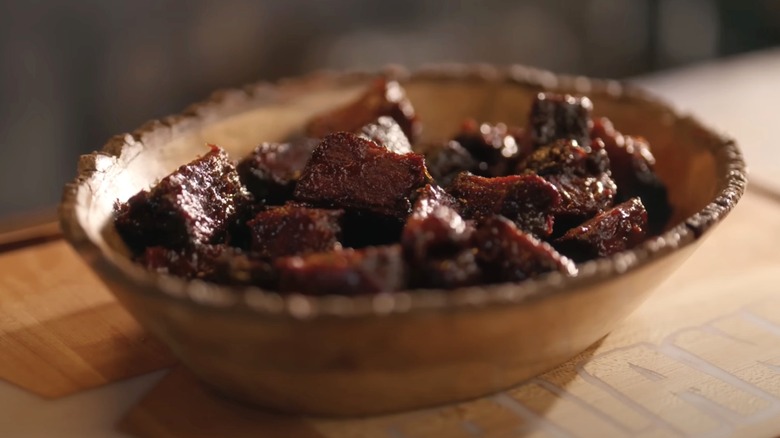Poor Man's Brisket Is A Deliciously Affordable Swap For The Real Thing
There's no denying brisket ranks among the most beloved cuts of meat — especially in the Southern U.S. — whether it's tucked into a smoky breakfast sandwich or served solo with your favorite store-bought barbecue sauce. When smoked low and slow over the right kind of wood or gently roasted in the oven, brisket becomes rich, tender, and full of flavor. Unsurprisingly, its popularity among meat lovers has surged in recent years — and with it, its prices. Depending on where you live and the quality of the meat, a pound of brisket typically costs between $5 and $6 on average, while top-tier cuts can reach up to $13 per pound — or even higher for specialty or wagyu options.
If you're hoping to stick to a budget or simply can't find brisket at your local grocery store, there's a solid alternative — referred to as "poor man's brisket" — that comes close in flavor and cooking style: beef chuck. To learn more, Food Republic spoke with Christopher Prieto, a 2025 James Beard Foundation nominee for "Best Chef Southeast," champion pitmaster, and owner of Prime Barbecue.
"A beef chuck does take the flavor of hardwood well, has a fatty richness, and can be made into burnt ends," Prieto explains. He notes that while its texture won't precisely match brisket's, the cooking processes and seasonings are largely similar.
How to get your beef chuck up to brisket standard
Beef chuck and brisket aren't identical, but they certainly have similar qualities. Both cuts are tough, well-worked muscles with similar structures — so just as beef chuck can be swapped in for pulled pork, it makes a reliable stand-in for brisket. Because of this, Christopher Prieto recommends treating chuck like brisket in terms of your cooking timeline. That means a long, slow cook — typically around 12 to 18 hours, depending on the size of the roast (figure 1.5 hours per pound). Season simply with salt and pepper, set your smoker to 225 degrees Fahrenheit, and don't skip the resting period afterward. Variables like meat thickness and even outdoor weather can affect total cook time, but this gives you a solid baseline.
There is an important distinction between chuck and brisket, however, to pay attention to when cooking, according to Prieto. "The finishing temperatures will be different," he explains. "There is larger connective fat in the roast and [it] requires more rendering." In other words, chuck has more dense fat and connective tissue that need to fully break down to achieve a tender texture. Prieto recommends cooking chuck roast to a finishing temperature of 205 to 207 degrees Fahrenheit, while brisket is generally finished between 195 to 205 degrees, or until probe tender.


